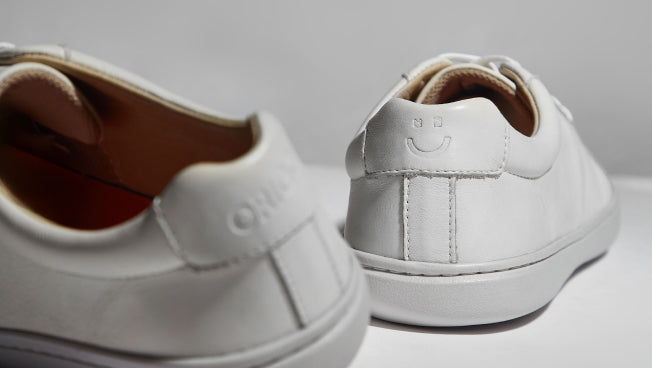
Have you ever seen people in your neighborhood jogging in flat, barely-there shoes? Or perhaps you’ve spotted a few people at your local gym lifting weights wearing what look like tennis shoes instead of conventional trainers? Chances are, they’re wearing minimalist shoes.
A growing number of people are eschewing flashy, bulky, and heavily cushioned sneakers and trainers for minimalist footwear. Read on if you’re wondering why minimalist shoes are growing in popularity. This article discusses the benefits of minimalist shoes and why minimalist shoes are a great footwear option for casual, daily wear, and athletic activities.
What Are Minimalist Shoes?
Minimalist shoes are designed to replicate the feeling of walking barefoot while protecting the wearer’s feet from hazards like rocks and glass. To be considered minimalist shoes, they must fit the following criteria:
A good way to gauge whether a pair of sneakers is minimalist is to check the heel-to-toe drop. Sometimes referred to as “offset,” the heel-to-toe drop is the difference in the thickness of cushioning between the heel and forefoot, typically measured in millimeters (mm). For instance, if a shoe is advertised as having an 8 mm heel-to-toe drop, then there’s an extra 8 mm of cushioning under the heel relative to the forefoot.
Conventional running shoes have a heel-to-toe drop of 8 to 12 mm. In contrast, minimalist shoes have a drop that’s less than 8 mm. For instance, Origo’s The Everyday Sneaker Gen 2 in Cactus Leather has zero heel-to-toe drop. So when you wear them, your heel and forefoot are as level as they would be if you were barefoot.
Another way to determine if a shoe is minimalist is if it has a low stack height. This refers to the amount of shoe material between the foot and the ground. In conventional shoes, stack height is measured at the heel and forefoot, while in zero heel-to-toe drop shoes, there is only one stack height measurement.
The stack height of minimalist shoes can range from 3 mm to 13 mm. Meanwhile, regular running shoes have a stack height between 9 mm and 29 mm. Minimalist shoes with a low heel-to-toe drop feel closest to walking on your bare feet. Meanwhile, a low stack height allows your feet to feel the ground while still providing some cushioning and protection against hazards.
- Lightweight
Conventional and maximalist running shoes, and even sneakers meant for everyday wear, can range in weight from 17.6 oz. to 2 lb or more. On the other hand, minimalist shoes tend to be very lightweight since it has none of the extra cushioning. Minimalist shoes typically weigh anywhere from 6.5 oz to 13 oz.
Are Minimalist Shoes Good for You?
There are a lot of misconceptions floating around about minimalist shoes. Some examples are that minimalist shoes are just a fad or cause injuries like plantar fasciitis. None of which is true. Modern minimalist footwear has been around since 2004 and is still popular among barefoot or minimalist running enthusiasts and non-athletes.
These types of shoes do not directly cause plantar fasciitis. In fact, wearing minimalist shoes can help bring relief to the plantar fascia and can strengthen other muscles of the feet and legs, thus helping prevent plantar fasciitis.
There are many advantages to wearing minimalist shoes, whether for everyday footwear, running, or lifting. The benefits of minimalist shoes stem from their ability to encourage natural movement.
People are born with feet that have strong arches and straight toes that splay outward and apart. However, years of wearing restrictive, fashionable shoes and relying on cushioned fitness footwear can lead to weakened foot muscles as well as altered foot anatomy and function. For this reason, many foot problems – such as plantar fasciitis, ingrown toenails, and crooked toes – can be traced back to conventional footwear.
Minimalist shoes help you regain your natural way of walking, which in turn may lead to advantages such as:
- Stronger arches
- Increased dexterity of feet and toes
- Improved balance
- Better posture
- Reduced wear and tear on the joints of the legs and feet
- Reduced risk of developing foot injuries
Because of the many benefits of minimalist shoes to one’s health, the answer to the question “are minimalist shoes good for you” is a resounding yes. What’s more, they’re also good for the planet.
Some brands that offer minimalist shoes prioritize sustainability and eco-friendliness. Minimalist shoes do not require as many materials or synthetic components to manufacture as conventional running shoes. Some brands, such as Origo, carry vegan-friendly and ethical minimalist footwear.
Sustainable, Vegan and Eco-Friendly Minimalist Footwear From Origo
Origo is a footwear brand specializing in “footwear gone natural,” shoes designed to give feet freedom of movement. Thin, flexible, wide and flat, Origo shoes are comfortable, stylish and the next best thing to being barefoot.
Origo’s collection of shoes for women, men, and children are made from ethically sourced, sustainable materials, such as biodegradable cotton canvas, plant based, and natural leathers certified by Leather Working Group. The latter is made from cacti grown using very little water and responsibly harvested in Mexico.
Learn more about Origo’s commitment to sustainability on our website. You may also contact the Origo Team if you have more questions or need help placing an order.






